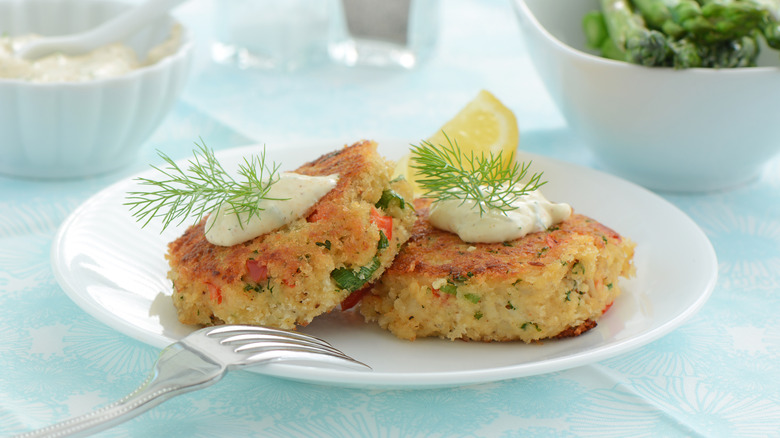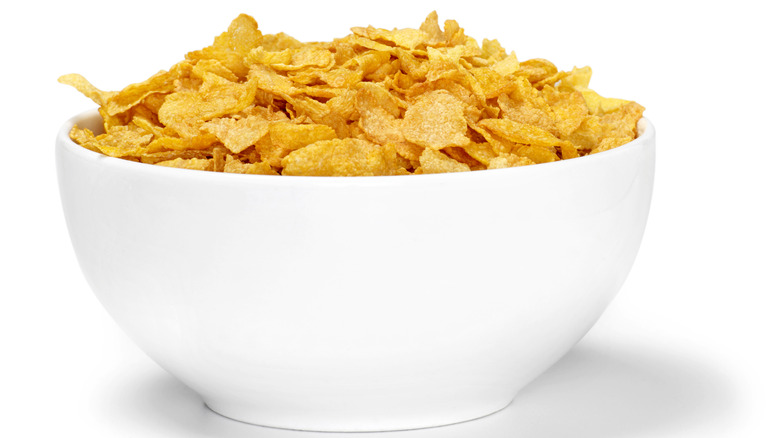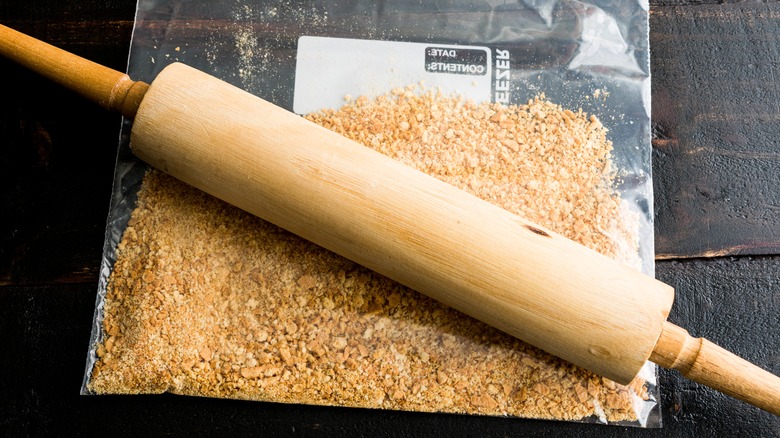The Ingredient Tip For Adding Some Extra Crunch To Your Crab Cakes
Texture is super important when it comes to seafood — especially breaded seafood — and crab cakes are no exception to this rule. Not only should they be super flavorful, but they should have a bit of a crunch to them as well — so it can be frustrating to put all of the work into making your own fresh crab cakes only to have them come out soggy and unappetizing. It's a risk you run when using breadcrumbs, which can absorb liquid from the crab itself as well as any oil they're cooked in. And while panko may be better, it isn't immune from turning mushy either. On the upside, there is an ingredient with a superior ability to stay crispy in the face of moisture: breakfast cereal.
When you think about it, it makes sense that cereal will stay crunchy for longer. After all, it's designed to withstand being drenched in a bowl of milk long enough for a good portion of it to be consumed before it finally gives in and gets soggy. That's because cereal experiences something called "moisture toughening," which happens when it is initially exposed to liquids — it gradually becomes soggy rather than soaking up liquids all at once. And since the amount of liquid involved in making crab cakes is much less than a serving of milk, cereal will have no problem maintaining its crunchiness when used in crab cakes.
What kind of cereal should you use?
While it's probably obvious that you're not going to want to use Lucky Charms or Cocoa Puffs (or anything similar), you may still be wondering what kind of cereal will work best for your crab cake recipe. For cereal breading, you'll want to go with a mild, neutral-tasting cereal that isn't sugary or overly flavored. Corn Flakes is one good option, as is Chex; you can use the rice, corn, or wheat varieties of Chex, but many of the other flavors may be too sweet. However, if you want to give the Honey Nut version a try, it might just work out if you're into crab cakes that are on the sweeter side — though it will probably be better to mix it half and half with one of the plain types.
On the other hand, there are a few plain-grain cereals that you might want to stay away from. Grape Nuts may actually be too crunchy to work with crab cakes, for example. Likewise, Bran Flakes have both a strong flavor and color that won't blend as well with the delicate crab as Corn Flakes will. Otherwise, plainer cereals are fair game for your crab cakes — and as an added bonus, many are gluten-free, so you won't have to pay extra for special ingredients if anyone in your household has a gluten intolerance.
How to use cereal in crab cakes
There is an extra step involved in using this ingredient tip for crab cakes, of course: You're going to have to crush the cereal up a bit to make crumbs. Don't worry, you don't need to pulverize it down to a powder — that would only defeat the purpose by destroying its original crunchiness, after all. But you do need to break it up a little so that the crumbs can properly coat the crab cakes, forming a protective layer around their entire circumference.
There's no need to bother with the food processor here. This step is best done by hand since you still want the crumbs to have a bit of substance to them. The easiest way to accomplish this is by putting the cereal in a freezer bag and then running a rolling pin over it a couple of times. Alternatively, you can give the bag a little beating with your palms. Either way, it won't take long at all, and you'll soon have the perfect coating for deliciously crunchy crab cakes.


